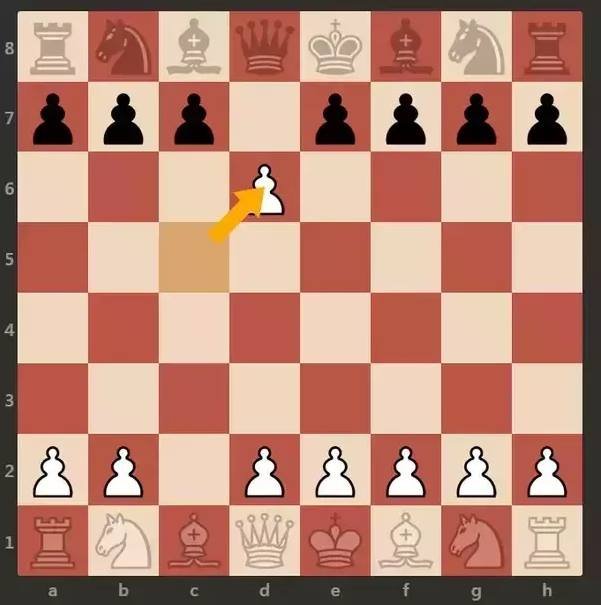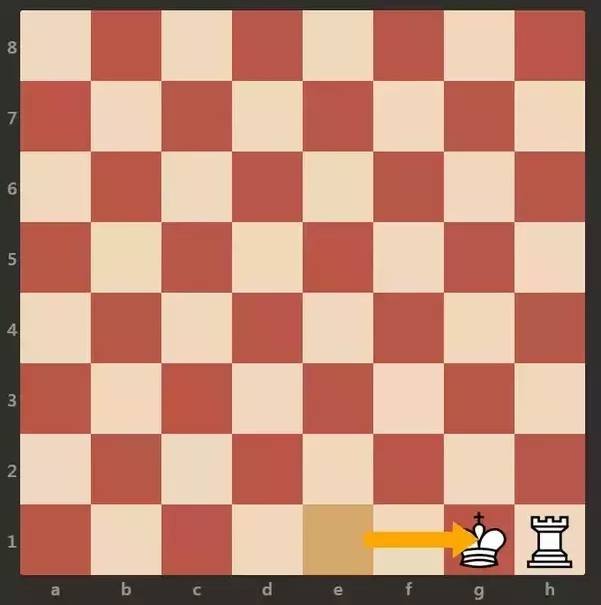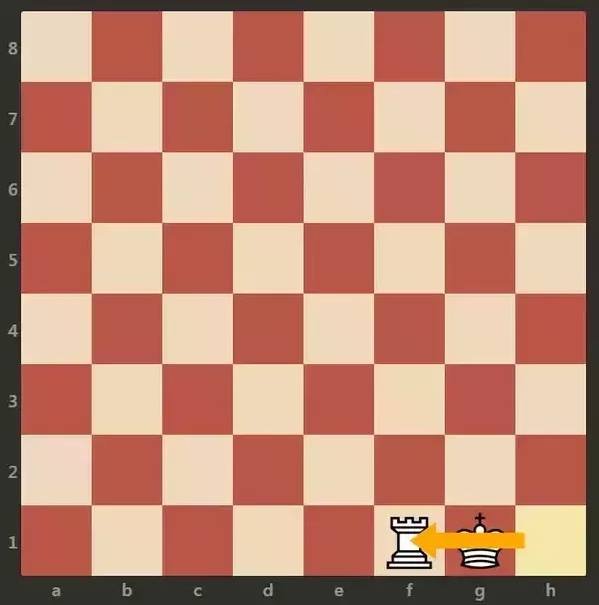Learning Chess — Advanced rules (Part 4)

This part of the learning Chess series, will discuss some additional rules to the one we discussed in the previous part: Basic rules. In this part we will discuss two extra rules, en passant and castling.
En Passant
En Passant is a move made by a pawn, where a pawn can take another pawn that has just moved two squares forward. You can only take the pawn from your opponent, if i) the opponent pawn has moved two squares forward, and ii) if the opponent pawn has placed his or her pawn next to your pawn. See the set-up bellow to understand what I’m talking about.

En Passant position
Like explained before, the white Pawn has now the ability to take the black Pawn if the player desires so. So, how can we take the black Pawn with our white Pawn? Simple, you take the black Pawn by moving the white Pawn one square diagonally to the right — arriving on d6 . If the black Pawn on b7 would have placed itself on b5, thus placing it self next to our white Pawn. Then we could also take that black Pawn on b5, by moving the white Pawn one square diagonally to the left — arriving on b6.
Also, very important, you can only en passant a Pawn when the opportunity presents it self, if you decide not to, and your turn is over, then you can’t do it anymore.

En Passant Quiz
White to move. Can the white Pawn on f5f5 take the black Pawn on ee5 ?
Answer

-----------------
Castling
Castling is an important move that serves as enforcing the King its defense.
Castling is the only move in Chess, where you can move two pieces. The two pieces we are discussing are the Rook and the King. You can castle to the King side, which means to the right, or to the Queen side, which means left. The castling pattern is simple, you move your king two squares to the left or right, after that you place the rook —from the side you are moving towards— next to the other side of the King. To be able to castle there are a few requirements, but let’s see first how Castling is done. See the steps bellow for clarification.
Step 1 — Castling Queen side (To the left side)
While castling we always move the King first, moving the Rook first is illegal and tends to confuse the other player. Like discussed, we first move the King two squares to the left (Queen side).

Step 2 — Castling Queen side (To the left side)
Move the Rook right next to the other side of the King. That’s it.

-----------------
Step 1 — Castling King side (To the right side)
Nothing changes in the steps when you castle to the right (King side). The only thing that changes is, on what square the Rook and the King is going to end up on. Just to avoid confusion let’s demonstrate this. Move the King two squares to the right (King side).

Step 2 — Castling King side (To the right side)
Move the Rook right next to the other side of the King.

-----------------
Castling requirements
There a few requirements for you to castle before doing so, let’s discuss them and illustrate them.
1. King and Rook(s) unmoved a
If the King or — the Rook from the side you want to castle to— has been moved already from their starting position, you lose the ability to castle. In the set-up bellow, you can only castle to the left (Queen side), because the rook on the right (King side) has already been moved. In the second set up, you can’t castle anymore for the entire game, because you have moved your King from its starting position!

1. King and Rook(s) unmoved b
It doesn’t matter if you go back to the starting position of the King, once the King has been moved, you lose the ability to castle.

2. The castling path has to be unblocked
When the path is blocked by one or more pieces, the King cannot castle.
It doesn’t matter whether the pieces are yours or from your opponent. In the example bellow, the King cannot castle to the left (Queen side). However, the King can castle to the right (King side), because the path is unblocked.

3. The King has to be unchecked
If the King is being checked the King cannot castle, being checked simply means being attacked. In the set-up bellow, the King is being attacked by the black Bishop, therefore the King cannot castle. However, if the Knight takes the black Bishop, the King has regained its ability to castle.

4. The castling path is free of attack
If the path on the left side or right side is being attacked by an opponent piece, the King cannot castle, and has to wait until that piece gets removed or blocked. Below is an example of what is meant by this.

5. Castling into a check is not allowed a
If you castle and it would be the case that your King ends up in a check, that is to say, ends up being attack by an opponent piece, you cannot castle. Bellow, if the King would castle it will end up right into a check, phrased differently in the line of attack from the black Pawn.

5. Castling into a check is not allowed b
If the King would castle the King would end up being attacked by the black Pawn! Okay, I hope you have payed attention, a big quiz wil follow for the castling rule!

-----------------
Castling Quiz 1
White to move. Can the King castle to the left (Queen side)?
Answer

Castling Quiz 2
White to move. Can the white King castle?
Answer

Castling Quiz 3
White to move. Which of the two sides can the King use for castling and why?
Answer

Castling Quiz 4
White to move. Can the King castle, why or why not?
Answer

Castling Quiz 5
White to move. Your ability to castle has been impeded, what would you need to do, to be able to castle again?
Answer

-----------------
This post may have been longer than expected for two simple rules. However, if the post has been followed carefully, while also completing the quizzes, the student should have a solid grasp of these two rules. Next we are going to discuss checking and checkmating.

You can review:
Part 1: https://steemit.com/chess/@kanggary/learning-chess-index-the-board-part-1
Part 2: https://steemit.com/life/@kanggary/learning-chess-chess-pieces-part-2
Part 3: https://steemit.com/blog/@kanggary/learning-chess-basic-rules-part-3